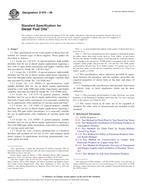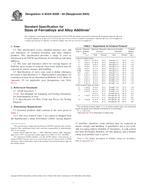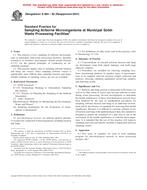1.1 This test method provides a procedure for measuring the electromagnetic (EM) shielding effectiveness (SE) of a planar material for a plane, far-field EM wave. From the measured data, near-field SE values may be calculated for magnetic (H) sources for electrically thin specimens. , Electric (E) field SE values may also be calculated from this same far-field data, but their validity and applicability have not been established.
1.2 The measurement method is valid over a frequency range of 30 MHz to 1.5 GHz. These limits are not exact, but are based on decreasing displacement current as a result of decreased capacitive coupling at lower frequencies and on overmoding (excitation of modes other than the transverse electromagnetic mode (TEM)) at higher frequencies for the size of specimen holder described in this test method. Any number of discrete frequencies may be selected within this range. For electrically thin, isotropic materials with frequency independent electrical properties of conductivity, permittivity, and permeability, measurements may be needed at only a few frequencies as the far-field SE values will be independent of frequency. If the material is not electrically thin or if any of the parameters vary with frequency, measurements should be made at many frequencies within the band of interest.
1.3 This test method is not applicable to cables or connectors.
1.4 Units – The values stated in SI units are to be regarded as standard. No other units of measurement are included in this standard.
1.5 This standard does not purport to address all of the safety concerns, if any, associated with its use. It is the responsibility of the user of this standard to establish appropriate safety and health practices and determine the applicability of regulatory limitations prior to use.
Product Details
- Published:
- 05/01/2010
- Number of Pages:
- 10
- File Size:
- 1 file , 240 KB
- Redline File Size:
- 2 files , 470 KB


